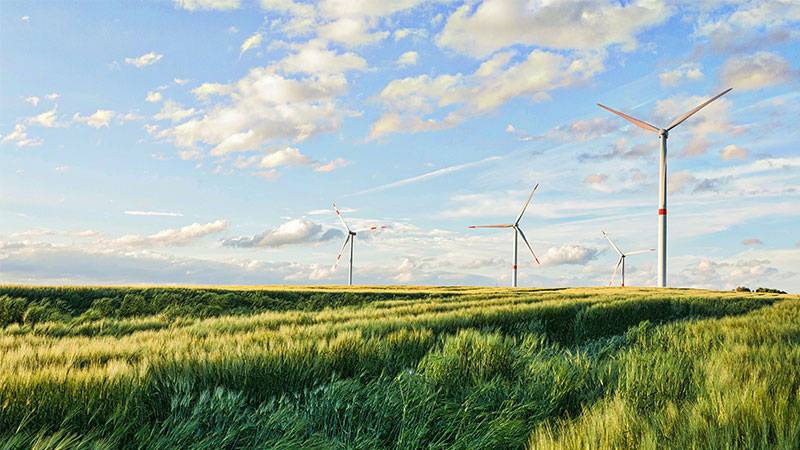The Swedish start-up Modvion has introduced an innovative approach to wind energy by constructing the world’s tallest wooden wind turbine. This 150-meter-tall turbine, located near Gothenburg, Sweden, represents a significant advancement in renewable energy technology, challenging the traditional steel-based construction of turbines.
Modvion’s CEO, Otto Lundman, and co-founder David Olivegren, have spearheaded this project with a vision of harnessing stronger winds at higher altitudes using taller turbines. The wooden structure, primarily made from layers of laminated veneer lumber (LVL) of spruce, a wood commonly used for Christmas trees, offers several advantages over steel. The wood’s layered grain structure contributes to the tower’s strength and flexibility, making it a viable alternative to steel.
The innovation lies not just in the material but also in the design. The wooden turbine is modular, constructed in smaller, transportable sections, which are then assembled on-site. This modularity addresses the logistical challenges faced in transporting large steel parts to construction sites, especially in areas with infrastructure limitations like tunnels and bridges.
Despite skepticism from industry giants like Siemens Gamesa, Modvion’s approach has gained attention for its potential to reduce the carbon footprint of wind turbines. Steel production for traditional turbines involves high CO2 emissions due to the use of fossil fuels in the process. In contrast, wooden turbines offer a carbon-negative solution as the carbon captured by the trees during their growth is stored in the wood.
Though wind power is cheaper and cleaner than almost all other forms of electricity generation, making steel involves extremely hot furnaces and almost always the burning of fossil fuels. That means CO2 emissions – the main driver of climate change.
Modvion says using wood instead of steel eliminates the wind turbines’ carbon footprint entirely, making them carbon negative.
The Modvion turbine, powering approximately 400 homes, stands as a testament to sustainable practices in renewable energy. According to the BBC, the company aims to escalate its production, envisioning that by 2027, they would produce 100 wooden modular turbines annually. Their goal is to ensure that in a decade, 10% of the 20,000 turbines installed yearly worldwide will be wooden.
This development comes at a time when the demand for renewable energy is surging globally. The transition to taller turbines is seen as essential in harnessing more potent winds, thus generating more power. Wooden turbines like Modvion’s could play a crucial role in this transition, offering an environmentally friendly and economically viable alternative to traditional steel turbines.
While challenges remain, including concerns about the practicality of assembling modular sections and the durability of wood compared to steel, Modvion’s project has opened new avenues in wind energy technology. It represents a significant step towards more sustainable and efficient wind power, potentially changing the landscape of renewable energy infrastructure worldwide.
Modvion’s initiative exemplifies the innovative spirit driving the renewable energy sector, offering a glimpse into a future where sustainability and practicality converge. As the industry strives to meet the increasing demand for clean energy, solutions like Modvion’s wooden turbine could be instrumental in shaping a more sustainable world.
More inspiring green news similar to this:


